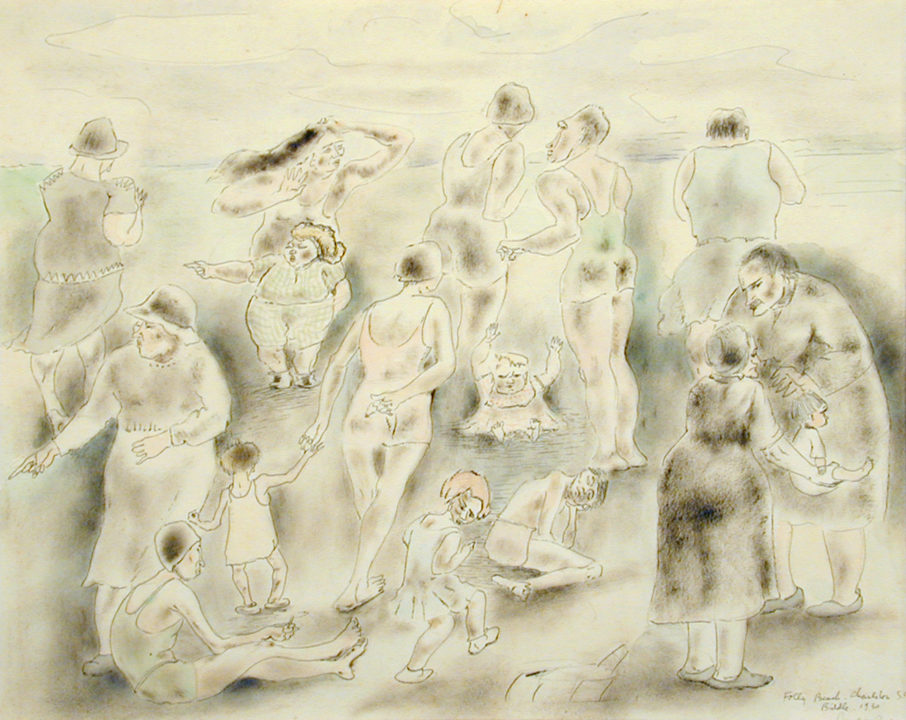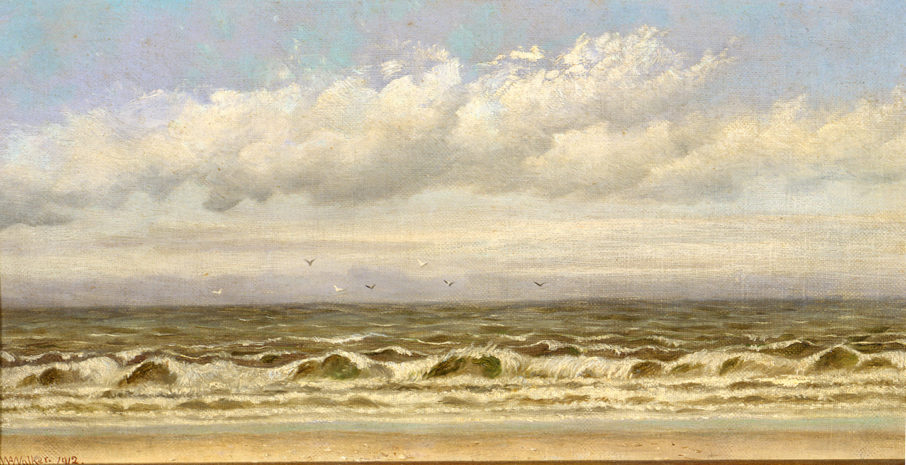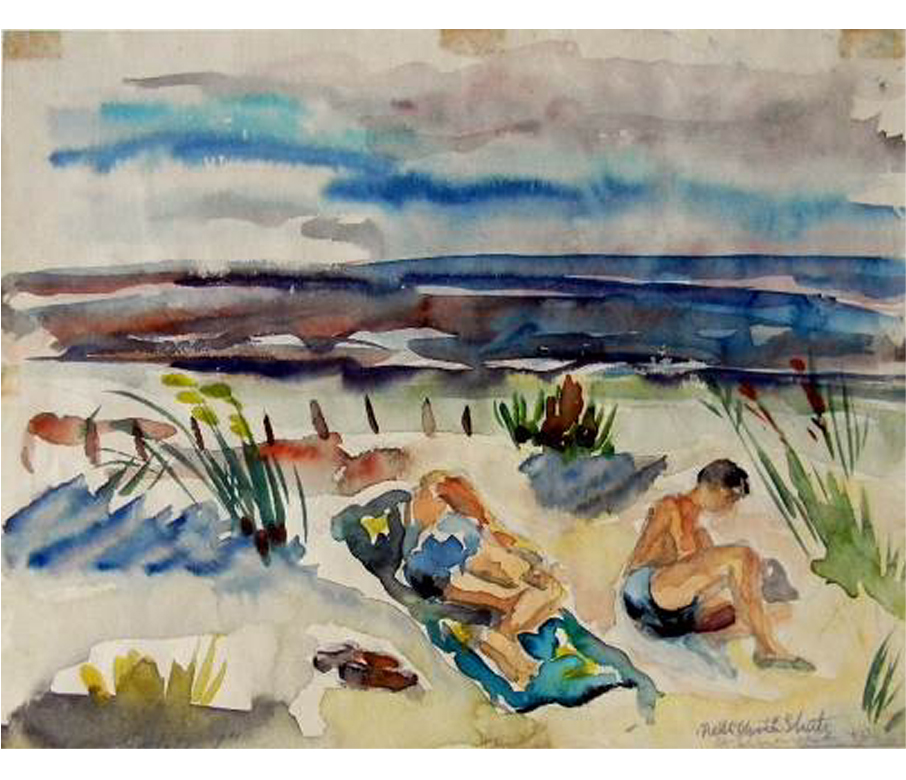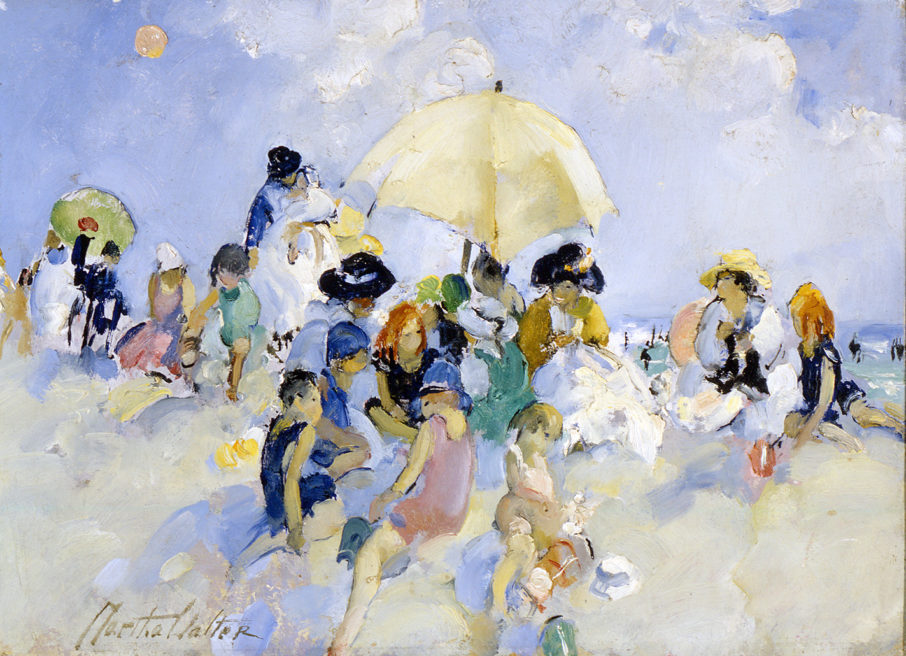When you live as close to the beach as we do here in the Lowcounty, it’s inevitable that many activities captured by the artists in the Gibbes Museum’s collection feature scenes set around the ocean. A Day at the Beach features images of oceanside settings and offer insight into American leisure in the twentieth century. As Americans vacationed in coastal towns, so did artists. This exhibition includes beach scenes from Coney Island, New York, to Palm Beach, Florida, representing a wide range of experiences throughout the East Coast.
Prior to 1900, working class Americans rarely escaped urban centers for vacation beyond day trips to nearby locations. This changed, however, as Americans gained time and wealth for leisure during the early twentieth century. By 1927 nearly half of American families owned an automobile. The construction of highways increased access to coastal towns throughout the eastern seaboard and Gulf coast. Beach resorts became popular destinations for middle class Americans seeking relaxation, beautiful scenery, and the health benefits of a coastal climate. Artists were not immune to the charms of the ocean either, and began capturing the vistas and people they encountered while at the beach.

George Biddle (American, 1885–1973) was one of these artists who found inspiration at the Lowcountry seaside, most notably Folly Beach. In 1930, Biddle, who was based in New York, traveled to Charleston and spent the months of May and June sketching genre scenes in the city and on nearby Folly Beach. Biddle’s time in Charleston resulted in a large folio of drawings, mostly pen and ink with subtle watercolor washes, including The Crowd, Folly Beach and At Folly Beach, both of which are featured in the exhibition. These watercolor and ink works on paper feature a variety of characters wading in the water and lounging on the sand.

One of the earlier works in the exhibition is William Aiken Walker’s (American, 1838 – 1921) Ocean Waves Breaking on Beach completed in 1912. Born in Charleston in 1838, Walker was an itinerant artist who spent much of his life traveling around the South between New Orleans, Charleston, Florida, and North Carolina. He gravitated to resort areas, where he joined other seasonal visitors. It is unclear where this particular scene was captured, but Walker’s mastery of the tonal varieties in the clouds and motion of the churning water conjures the sounds of the crashing waves and smell of the salty air without ever stepping foot on the beach.

Ben and Halstead by Nell Choate Shute (American, 1898–1966) portrays two beachgoers relaxing on St. Simons Island in Georgia. A sea island off the Atlantic Coast, St. Simons became a resort destination in the late nineteenth century. In 1924, a new causeway connected the island to the mainland, ushering in a new era of tourism. Paved roads, golf courses, a yacht club, and other resort amenities soon followed and St. Simons Island remains a popular vacation destination today.
On the Beach by Martha Walter (American, 1875–1976) depicts an idyllic, blue sky day as early 20th century beachgoers enjoy a moment by the water. Born in Philadelphia, Walter studied under William Merritt Chase at the Pennsylvania Academy of the Fine Arts. She went on to study in Europe and traveled extensively through France, Holland, Italy, and Spain. Walter eventually settled in Gloucester, Massachusetts, and became well known for her Impressionist paintings, particularly her beach scenes. She was acquainted with fellow artist Jane Peterson, whose work is also included in this exhibition.

We hope that on your travels this summer (possibly to or from the beach…) you’ll visit A Day at the Beach and take in some inspiration from these talented artists and their interpretation of life by the ocean.
—Amanda Breen, Curatorial Assistant
Top Image: At Folly Beach, 1930, By George Biddle (American, 1885–1973); Watercolor and ink on paper; 17 ¾ X 20 ½ inches; Museum purchase with funds provided by the Winnie Edwards Murray Fund; 1985.027.0003
Published June 28, 2018

